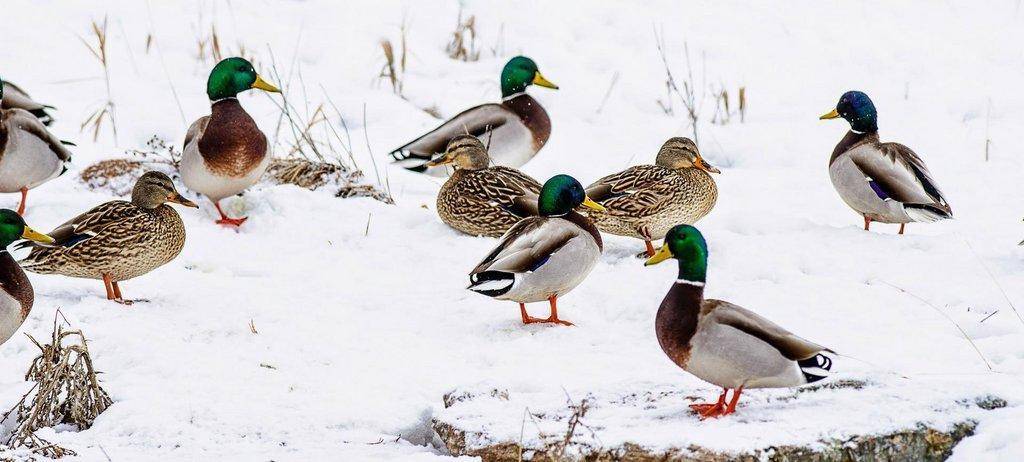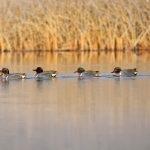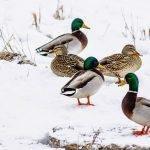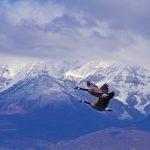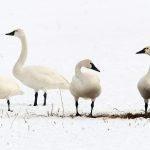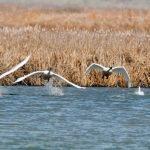DWR News Release
It’s a quiet, still morning as you sit near the edge of a lake in your blind. You hear some birds in the distance and turn your head to see several ducks flying toward you. Your heartbeat quickens, and you slowly raise your shotgun. Waterfowl hunting season is finally here.
With the exception of swans (which require a permit from the hunt drawing that ended July 16), the rest of the waterfowl hunts in Utah are open to anyone with a Utah hunting license. However, you are also required to have a Harvest Information Program (HIP) number to hunt any waterfowl in Utah, and a federal duck stamp if you are over the age of 15. You can register for a free HIP number on the Utah Division of Wildlife Resources website.
If you are planning to hunt ducks, geese or swans this fall, here is more about what you should expect and when the various seasons will open:
Ducks
The annual national and statewide population surveys were canceled this year, due to COVID-19 concerns, so there isn’t a current population estimate for ducks in Utah. However, based on general observations, DWR biologists said the production of ducks in Utah seemed good this year.
Typically, about 15 duck species can be found in Utah. Details and photos of each species can be found in the Utah Waterfowl 2020-21 Guidebook. Pintail and scaup numbers significantly decreased last year, and will likely be lower this year as well.
“Hunters can greatly improve their success during the duck hunt by spending some time scouting before each hunt,” Blair Stringham, the DWR wildlife program assistant chief, said. “Learning where and when birds are in a specific location can allow hunters to be where the birds want to be, when they want to be there, and will greatly increase the number of birds they harvest.”
For instance, each duck species uses different types of habitats. Diving ducks, like canvasbacks and redheads, like big, open waterbodies. Puddle ducks, like teal and shovelers, are generally found in shallow water. And species like mallards can be found just about anywhere.
“Think about the species you are hunting and then look for them in the habitats they want to be in,” Stringham said. “If you aren’t finding the species you are targeting, move around to different areas until you find them.”
Calls are also an effective tool in helping hunters be successful during duck hunts. Most hunters use a traditional duck call that sounds like a mallard hen. Experimenting with other sounds, such as wigeon or pintail whistles, can increase success. Dogs are great at helping hunters retrieve downed birds and will increase your chances of finding ducks that fall in thick cover.
The general-season duck hunt opens in Utah’s northern zone on Oct. 3 and in the southern zone on Oct. 17. The youth hunts open on Sept. 19 in the northern zone and on Oct. 3 in the southern zone. Check the Utah Waterfowl Guidebook for the boundaries of the two zones and to see the bag limits for ducks.
Geese
Geese surveys were also canceled this year due to COVID-19, but anecdotal observations suggest that geese also had good production locally.
“The weather in the early spring was very favorable, meaning we didn’t get much flooding or any major storms during the nesting time period, so geese likely had nest success and good survival of goslings,” Stringham said.
One of the best ways to be successful during the geese hunts is to use a good call.
“Calling is a very important part of goose hunting,” Stringham said. “Geese are very social birds, so being able to sound like a goose can help hunters harvest more birds.”
Hunters should also note that most light goose hunting takes place on private property. Make sure to get written permission from landowners before hunting on their property.
The light geese general season opens on Oct. 26. The dark geese season opens on Oct. 3 in the northern goose area, the eastern Box Elder goose area, and the Wasatch Front goose area, and on Oct. 17 in the southern goose area. The youth hunts allow dark goose hunting and will be held on Sept. 19 for the eastern Box Elder, northern and Wasatch Front goose areas, and on Oct. 3 for the southern goose area. Also, remember that for most goose seasons there is a period of time during the middle of the hunt when the season is closed. Check the Utah Waterfowl Guidebook for the specific zone boundaries and season dates.
Swans
Tens of thousands of swans move through Utah every fall on their way to their wintering grounds in California. While swan surveys were also canceled this year, their populations generally remain stable, so they will likely be similar to last year.
“Swans migrate and stop over at the same locations each year,” Stringham said. “Traditional hunting areas, such as the Bear River Migratory Bird Refuge, will hold swans beginning the first part of November until the marshes freeze up.”
Hunters should also be aware that swans will leave resting areas to feed during the morning and late afternoon, and throughout the day as temperatures get colder. So scouting before the hunt can help determine when swans are moving, so hunters know what times of day to hunt.
“Hunting along a swan’s flight path, or in their feeding locations, will increase your odds of harvesting a swan,” Stringham said.
Hunters should also be sure of the swan species they are targeting before attempting to harvest one. Trumpeter and tundra swans both migrate through Utah and can be identified by size and sound. Trumpeter swans are significantly larger than tundra swans. Trumpeter swans do not have a yellow-colored area near their eyes, and they also make a distinctive trumpet-like sound, hence their name.
Similar to last year, there is a federal quota of 20 trumpeter swans that can be harvested in Utah. The swan hunting season was closed early for the first time in Utah last year because the federal quota for trumpeter swans was reached. Hunters with a permit can legally take one trumpeter or tundra swan; however, hunters are discouraged from harvesting trumpeter swans.
Utah is one of only nine states in the U.S. that allows hunting for swans. Due to the low population size of trumpeter swans in the Greater Yellowstone area, the U.S. Fish and Wildlife Service sets an annual harvest quota for the number of trumpeter swans that can be harvested in Utah.
The general swan season opens on Oct. 3, and youth with swan permits may hunt swans during the youth waterfowl hunt in the northern zone, which takes place on Sept. 19. Those with a swan permit may harvest only one swan during the 2020 season.
Waterfowl Management Areas
There are more than 20 Waterfowl Management Areas (WMAs) throughout Utah that are owned and managed by the DWR. The majority of the WMAs are in great condition and should have lots of birds when the hunts open.
However, hunters should be aware that the Great Salt Lake is pretty low currently, and access will be difficult in some areas, particularly on the Willard Spur WMA. Most mud motorboats will not be able to access the spur, and airboat access will be very limited. Hunters should also note that a channel dredging and island restoration project at the Salt Creek WMA was postponed due to heavy rains this summer, and the area will have little to no water during the youth waterfowl hunt on Sept. 19 and when the general season opens on Oct. 3.
For specific details and condition reports about the other WMAs, visit the DWR website. The WMAs open to public foot traffic in September and to boats on Sept. 17.
Waterfowl Slam
If you’d like to add some fun and challenge to your hunt, consider completing the Waterfowl Slam. Hunters earn a slam by completing different requirements, such as harvesting a group of species in a certain time period or location. There are currently 10 slams with different levels of difficulty, so you can find a variety of fun, unique challenges.
Along with trying something new, hunters who complete the slam can also earn colorful, collectable leg bands. The money earned from the slam is used to complete habitat-improvement projects on the different WMAs across the state. You can learn more about the slam on the DWR website.
- Photos courtesy of the Utah DWR

